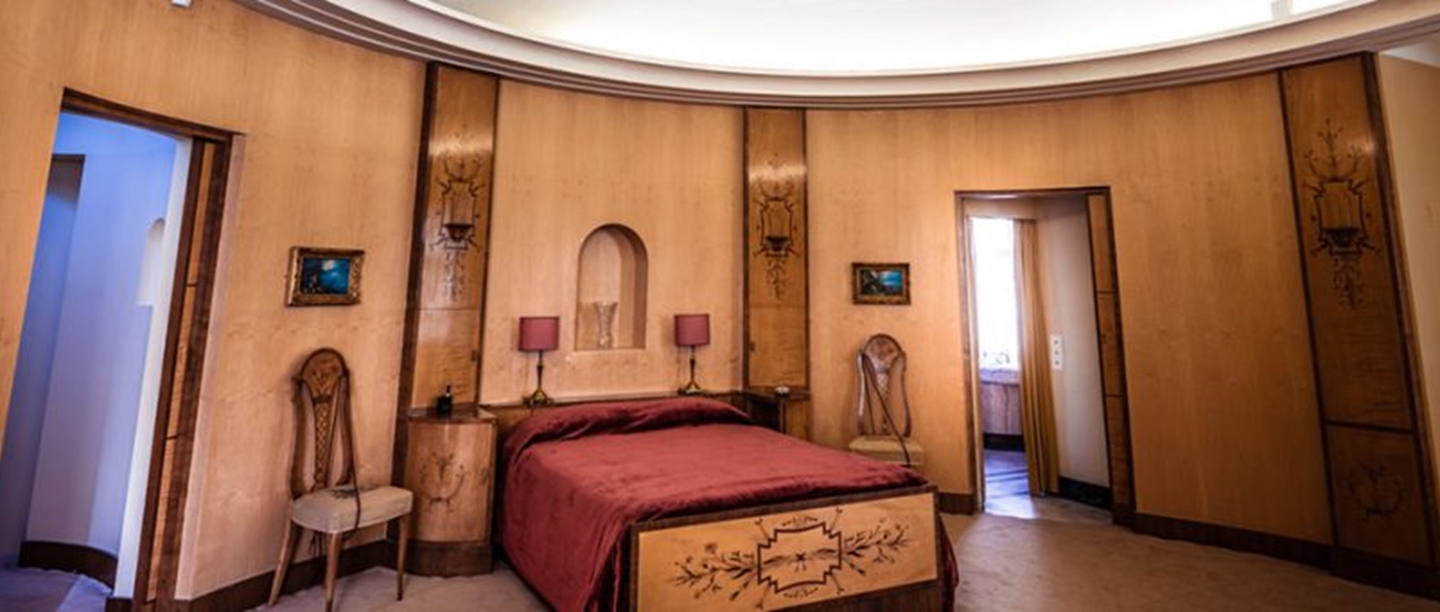
Social Historian Ruth Goodman visited the stunning Art Deco mansion Eltham Palace in London with her daughter Eve for dress-up, daydreaming and more. From the sophistication of lavish evening wear, to more practical garments for housework, join Ruth and Eve as they discover women’s fashion from inside one of England’s most decadent family homes.
Watch our video, then learn about style and sophistication from the 1930s.
Eve and I had never been to Eltham Palace, we were rather shocked to realise. How could we have possibly missed it? A great Tudor house elegantly remodeled in the early 1930s for sophisticated living; the perfect venue to enjoy some sartorial delights.
The 1920s and 30s had the first recognisably ‘modern’ clothes for women. Synthetic fabrics, shorter skirts and a much more natural bodily outline all mark a radical shift away from centuries of body sculpting with corsetry, hoops, and pads.
Clothes are a great way to put yourself into the shoes (even literally) of those who went before us. They are so personal, so human. It’s not just what people wore, but why they wore it. Take the evening dress that Eve had chosen for example: seemingly simple, it allowed one to glide languidly about, the very picture of controlled sophisticated carelessness. Yet it was a very skilled piece of workwomanship, at the cutting edge of textile technology with its bias cut and silk crepe fabric alluding to the clothes in classical Greek statuary. This was a statement dress. It said ‘look at me I am cultured, can command the very best dressmakers and can do so without even trying. Envy me.’
I chose a slightly less dramatic outfit, a good wool coat over a knitted dress, something for a trip to the cinema perhaps. Knitting worn as outer wear! In public! Oh how shocked our model’s Gran would have been. Our thoroughly modern Millie may even have knitted it herself. Knitting was all the rage amongst the young and trendy, with brightly coloured yarn and fancy stitches and knitting patterns in all the most fashionable and desirable magazines. Figure hugging and relaxed, knitted clothes were democratic too, a fashion fabric achievable on a budget. ‘Welcome to modernity’ says this outfit with a slightly saucy look in the eye.
Almost everyone had a housecoat somewhere in their wardrobe, from the lady who twirled her pearls over cocktails to the newest recruit to the typing pool. Something to wear around the house when you are busy keeping on top of the cooking and cleaning, they were cheap and hardwearing. It was generally worn over other clothes so that at two seconds’ notice you could transform yourself into an apparent lady of leisure, nicely turned out and ready to receive guests or face your public outdoors. It said ‘I am a Housewife, not a servant, my time is my own. Wait till you see me at the dance.’
The past may be a ‘different country’ but luckily it’s made up of people like us. That, I think, is my favourite thing about history. People made these clothes, designed the machines, came up with the chemistry to dye them, they put on fashion shows to sell them and then people shopped, chose and wore them. At every stage these people speak to us in a language that we instinctively understand, as we in our turn choose what to wear.
Inside Virginia Courtauld’s bedroom
A visit to Eltham Palace would not be complete without stepping into Virginia’s magnificent bedroom. With the appearance of a primitive temple, the room contains sycamore veneer pilasters and the splendid curved walls are lined with maple flexwood.
With classical allusions to three of the four elements, the bedroom contains copies of two paintings by Jan Brueghel (1568 – 1625) representing air and water, while fire is alluded to on either side of the reproduction electric fire and incised depictions of a salamander and a phoenix – mythical creatures which rose out of the flames.
Visitors can now enter Virginia’s walk-in wardrobe and sample the flavour of the 1930s by trying on some beautiful garments from the era – ensuring your visit to Eltham Palace is all sewn up!
An artificial silk empire
Stephen Courtauld was the youngest of six children and his family owned a highly successful business empire manufacturing a range of silks and artificial fibres including rayon. Artificial silks allowed women in the 1930s to buy garments that looked and felt like silk, but were much more affordable. Stephen did not join the artificial fibre business, but his inherited shares generated a substantial fortune, which he used to pursue a variety of cultural and philanthropic interests.
Jet-setting, maps, murals and more
As well as their love of entertaining, the Courtaulds loved to travel. Often using their motor yacht, ‘Virginia’, they travelled the world and kept a travel diary and photo album to document their travels. An exciting recent find in the palace is further evidence of their fascination with faraway places. An entire room covered in maps and murals was discovered in a storeroom, the former office of Virginia’s secretary. Thanks to donations from the public, painstaking conservation work was able to be undertaken to reveal and protect the maps and surrounding beautiful murals. Now visitors can enjoy a hand-drawn link to the 1930s and see the world through the eyes of the glamorous, globetrotting Courtaulds.
Find out more about Stephen and Virginia Courtauld and Eltham Palace with How to Host a 1930s Dinner Party like the Courtaulds.